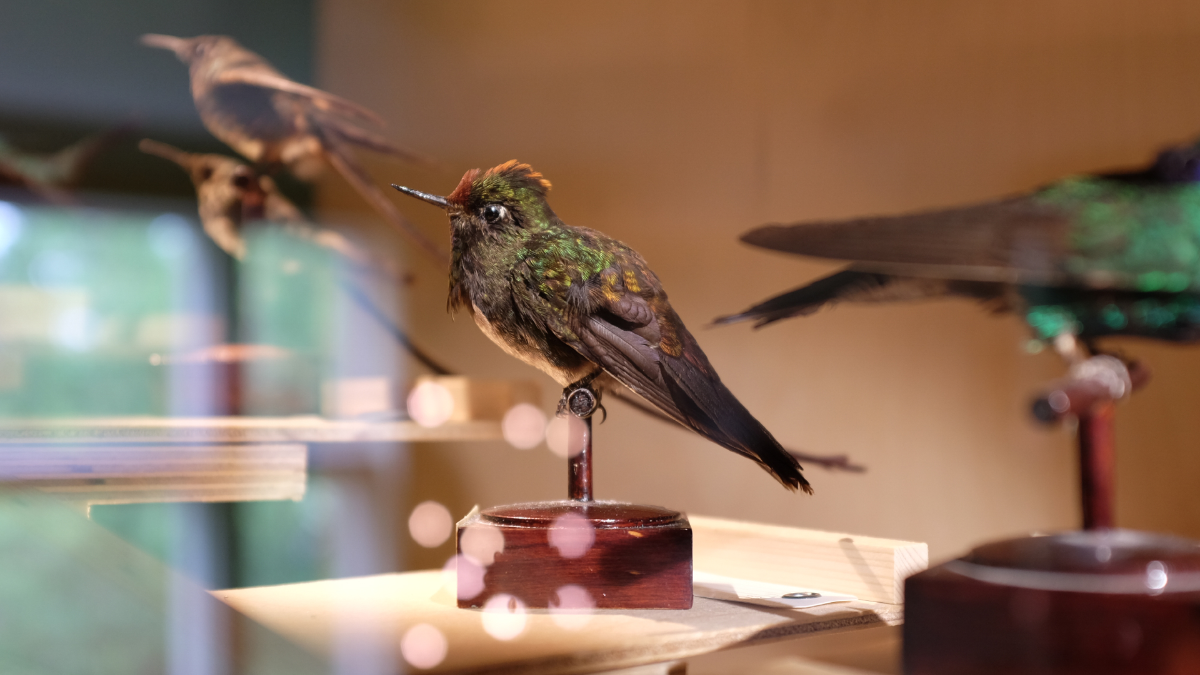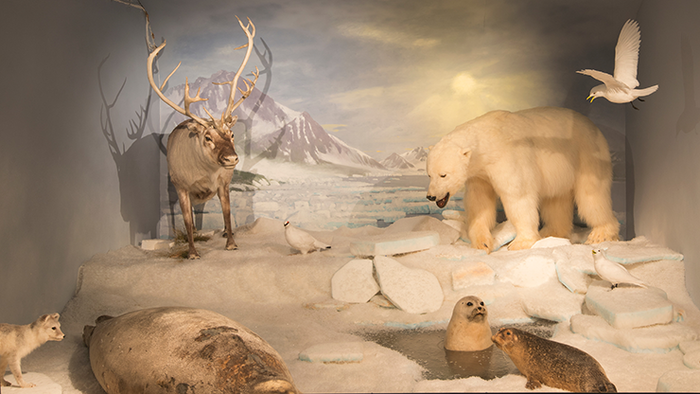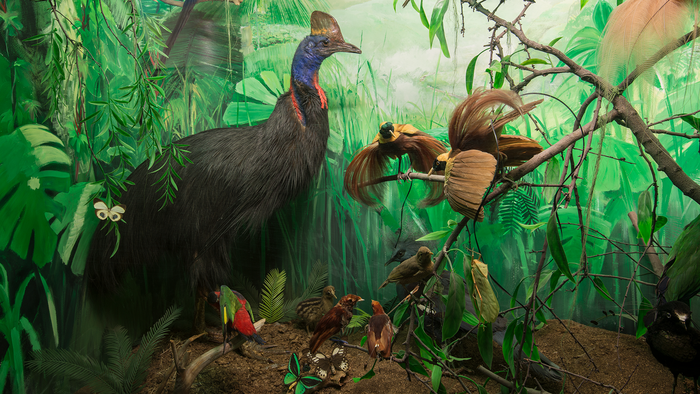In birds and other animals there are often great differences between the sexes. Usually, males compete for the females' attention when it is time to mate, and males with the most beautiful plumage color or impressive song display tend to be chosen.
This kind of selection is known as sexual selection, and has been important for the evolution of striking traits in the animal kingdom, such as the peacock's tail.
Long tails and colorful plumages may reveal something of the genetic quality of the owner. And dewlaps, like the comb in gallinaceous birds, might reflect the state of his health condition.

In the mini-exhibition "Nature's most beautiful", you can see the works of sexual selection through a display of some or our most colorful bird specimens. Among them are hummingbirds, sunbirds and the bluethroat.
The mini exhibit is located at the top of the staircase on the second floor of Collett's House (formerly Zoological Museum).





